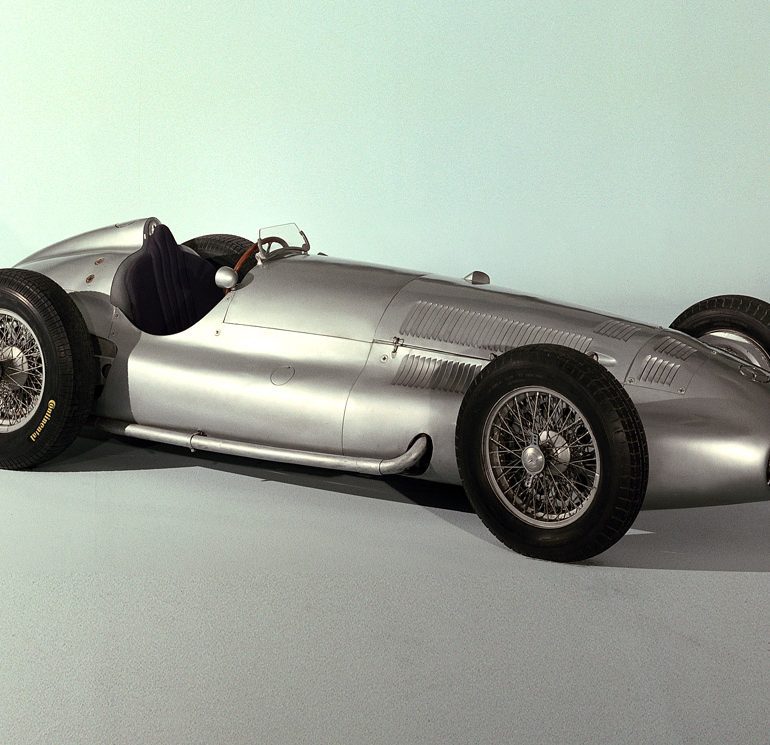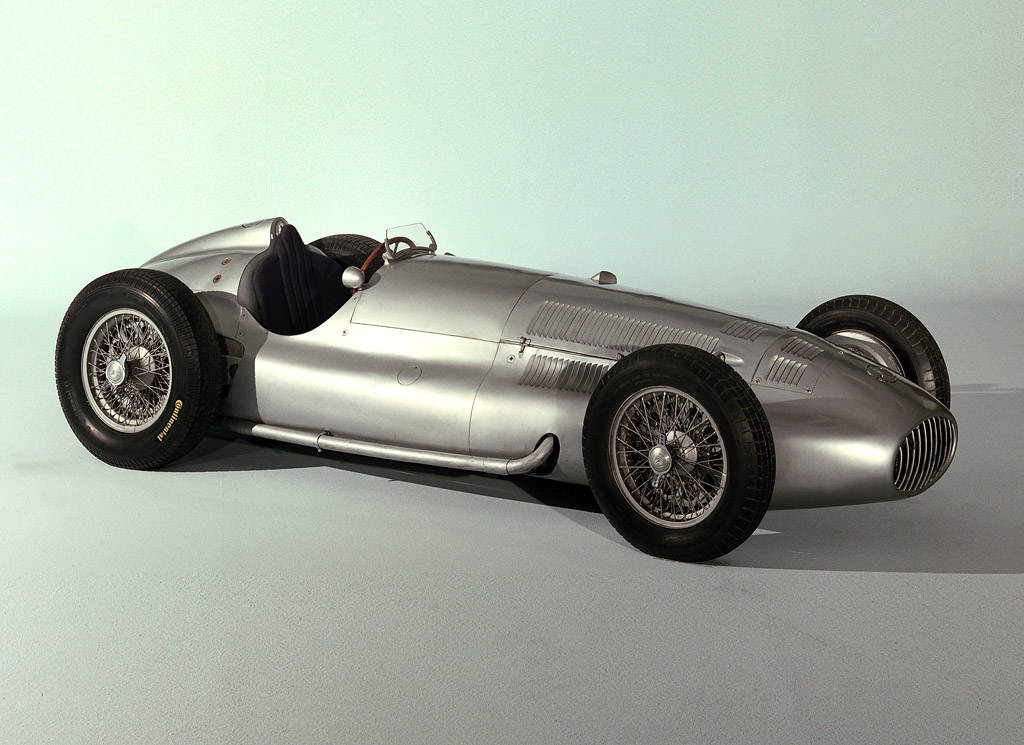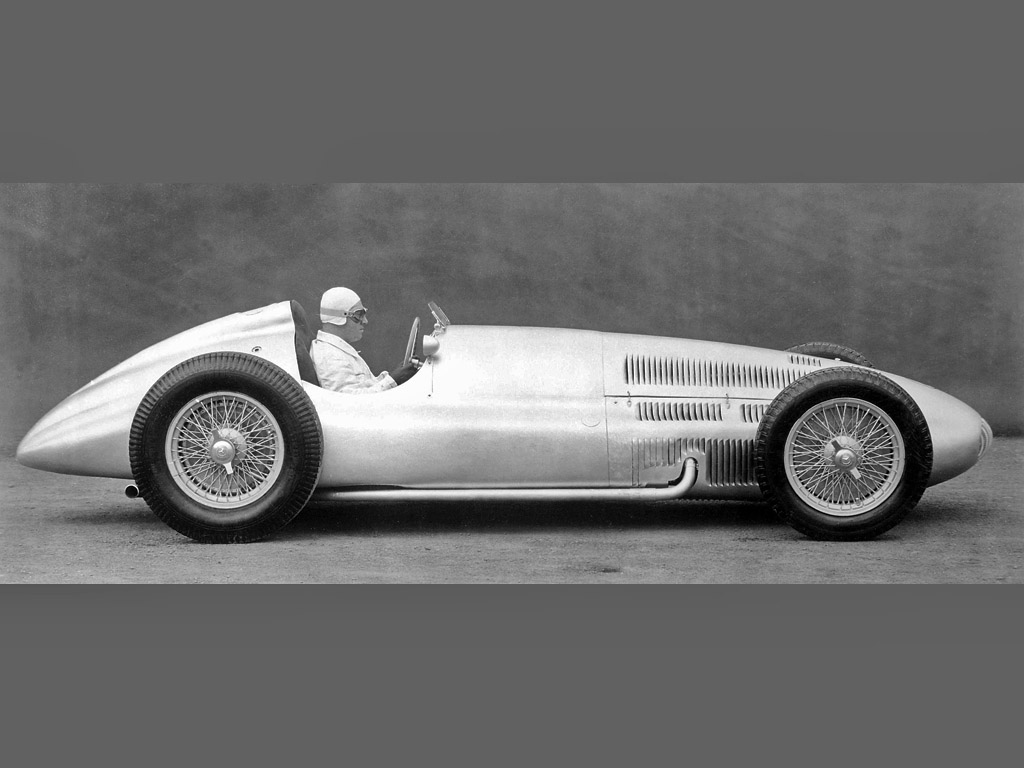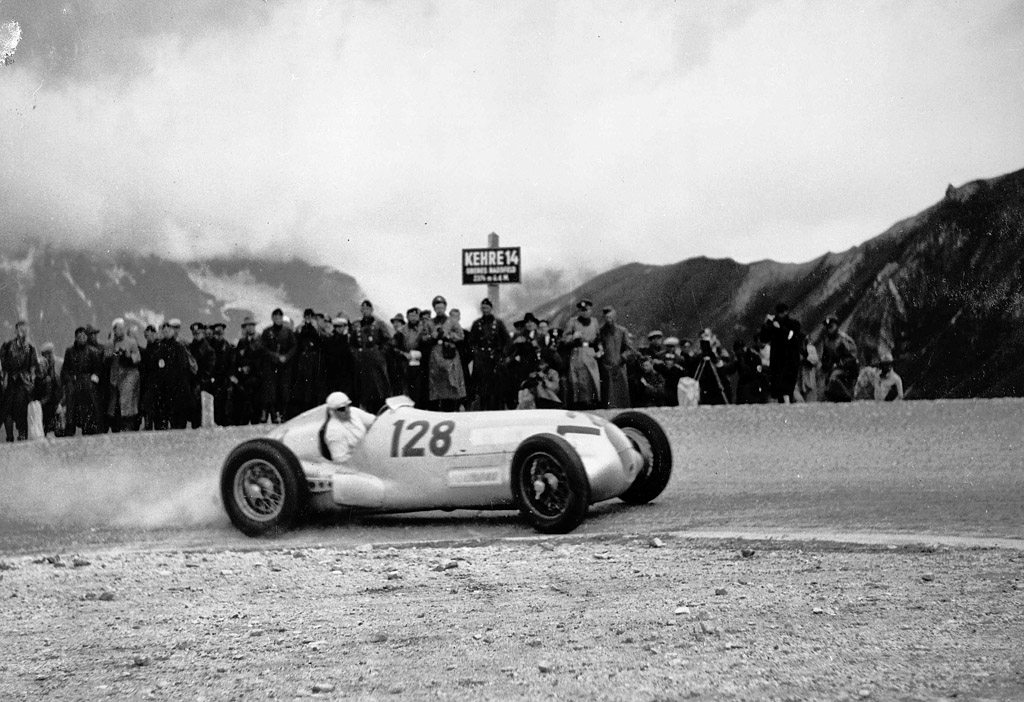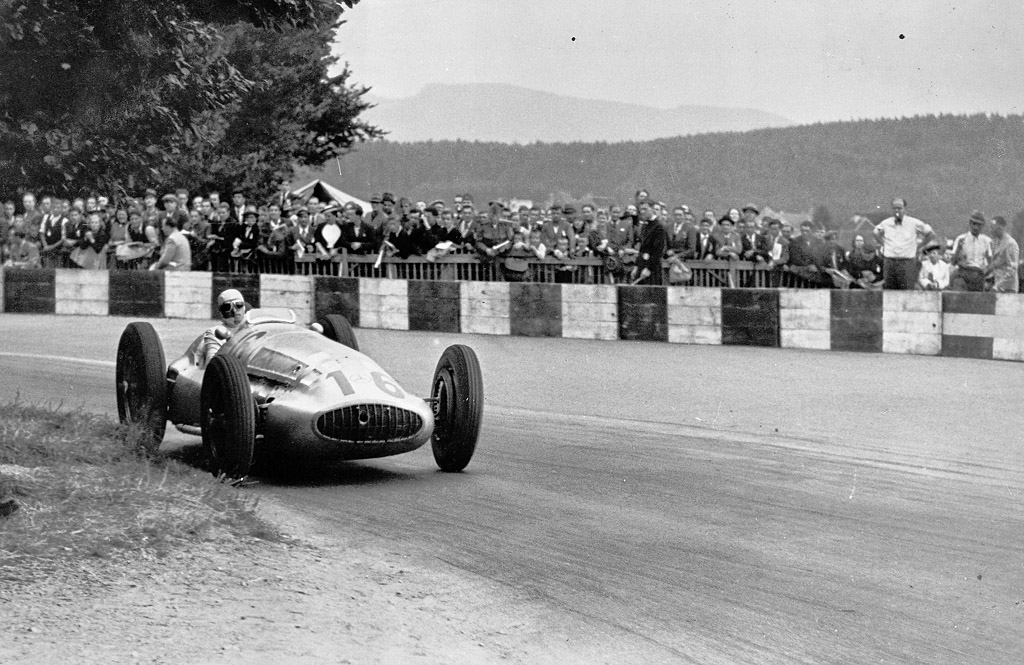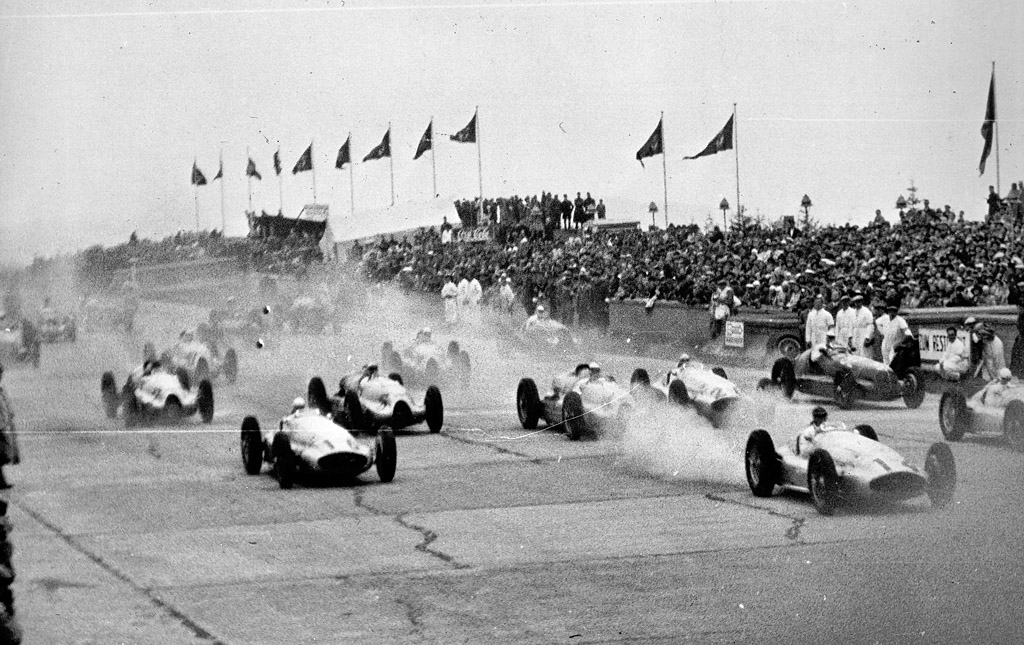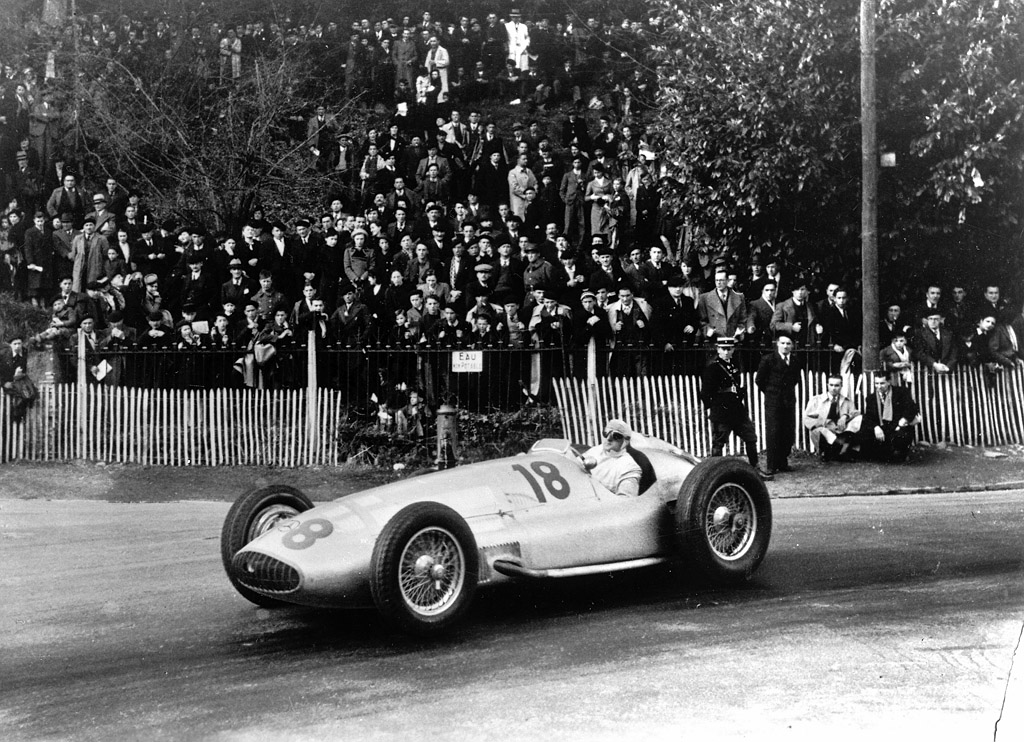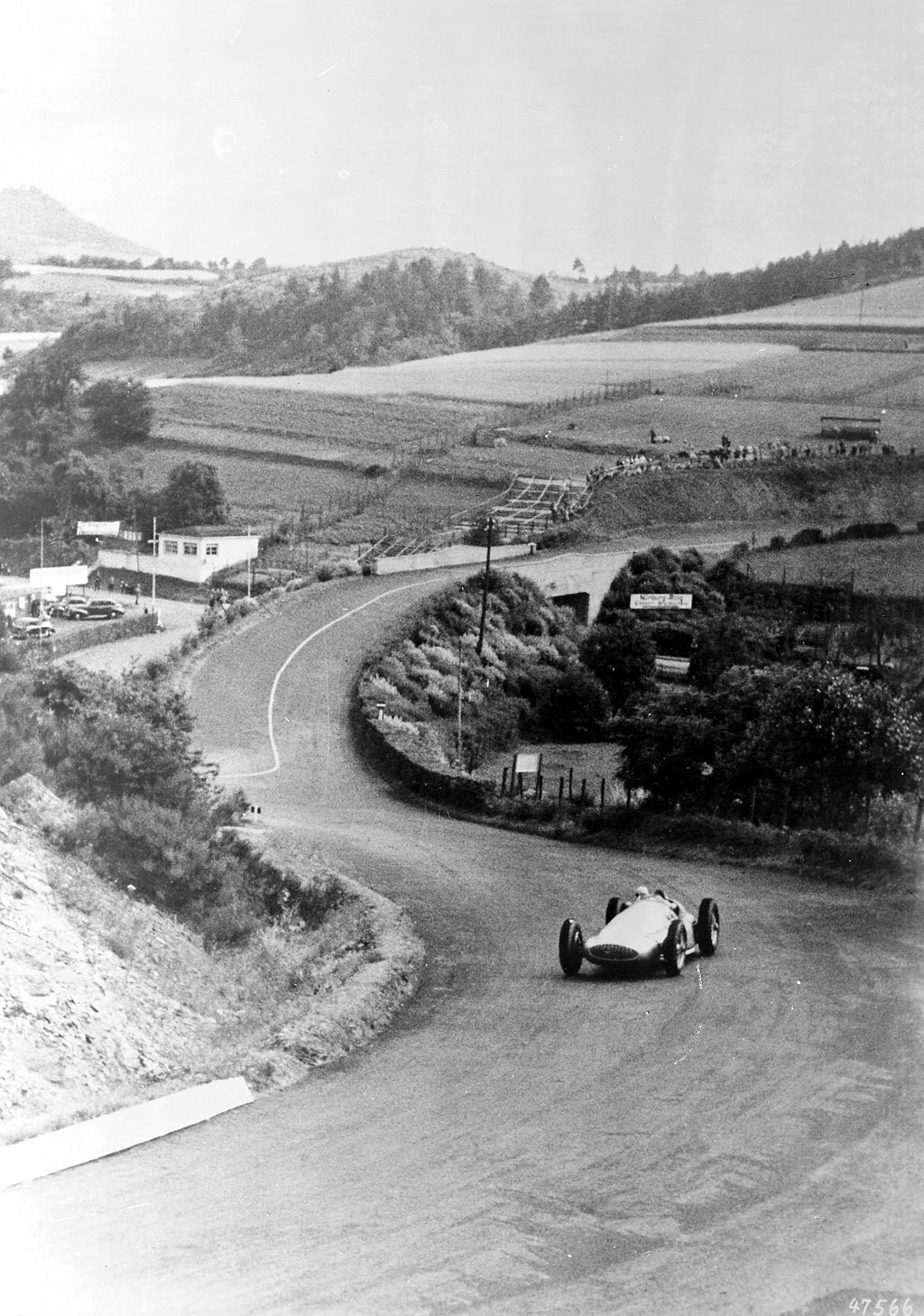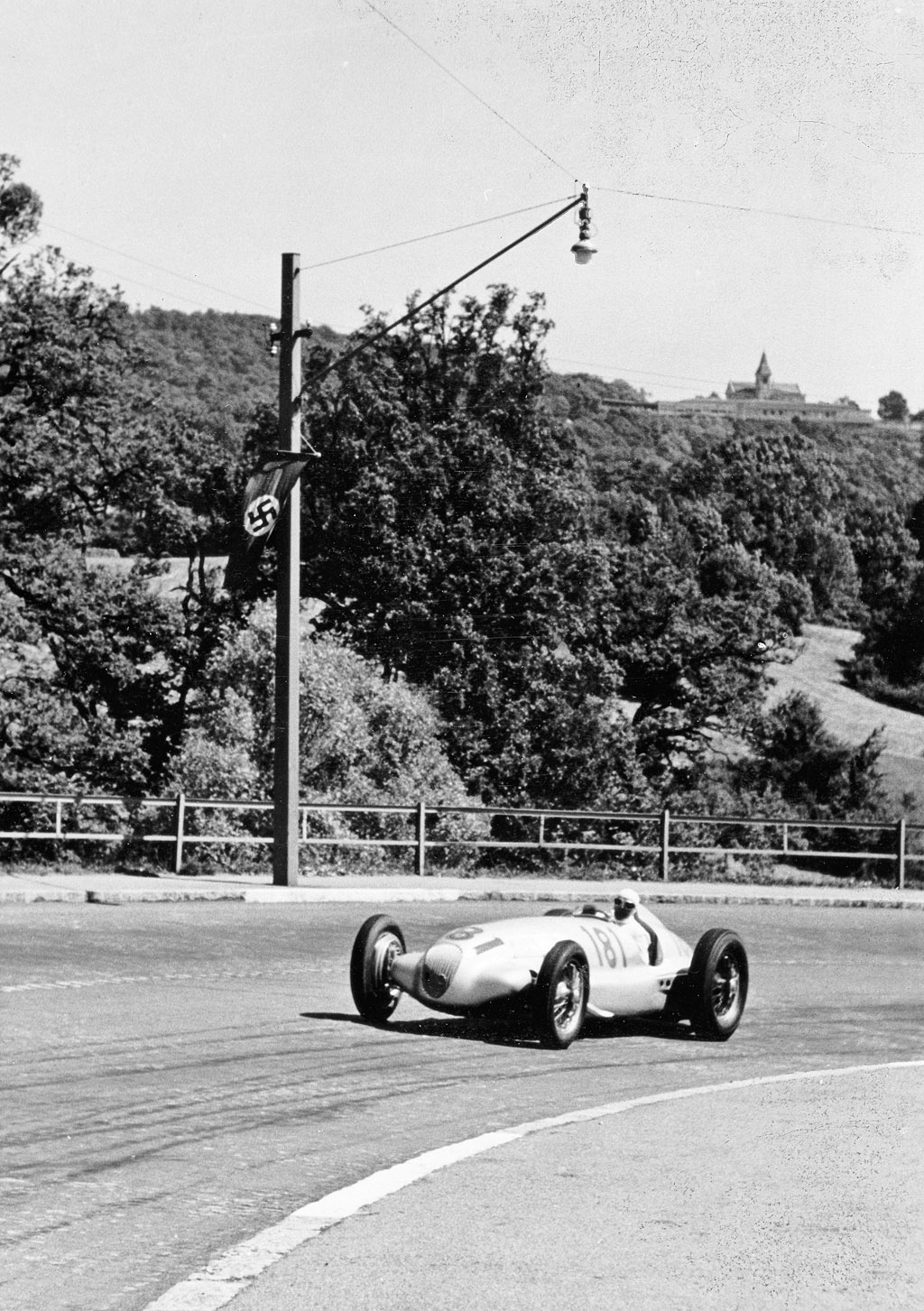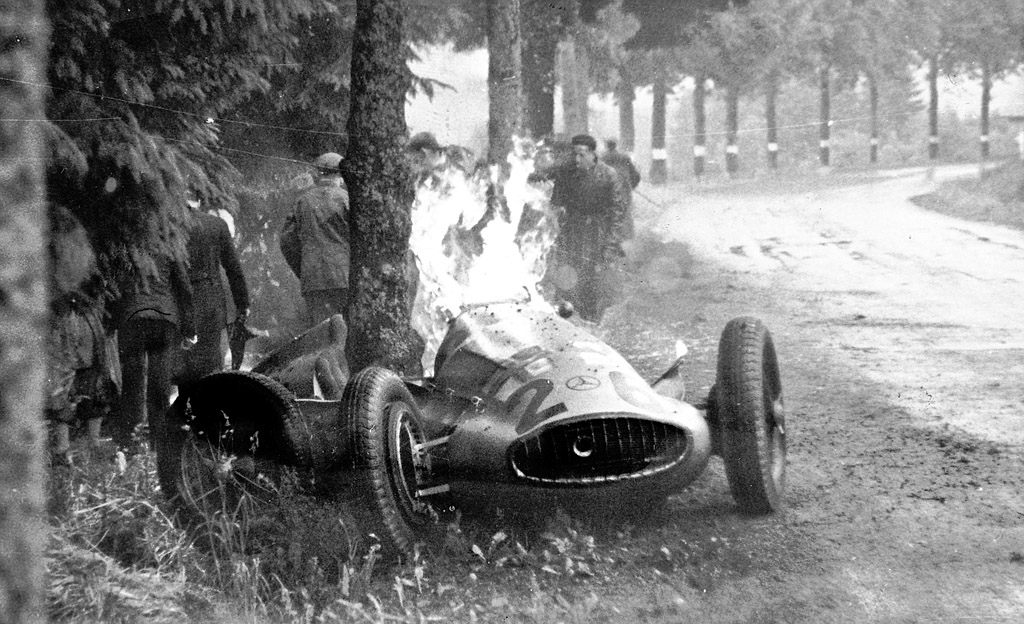1939 Mercedes-Benz W154
The W 154 had been the most successful Silver Arrow until that point in time: Rudolf Caracciola clinched the 1938 European champion’s title (a world championship did not yet exist), and the W 154 won three out of four Grand Prix races counting towards the championship.
In order to avoid problems in terms of weight distribution the balance was equalled out by means of a saddle tank above the driver’s legs. In 1939, a two-stage supercharger boosted the V12’s output to 483 hp (355 kW) at 7800 rpm. This engine was now called M 163. The endeavours of AIACR to reduce the open-wheel Grand Prix racing cars’ speeds to acceptable levels had practically failed. The fastest laps, for instance on Bern’s Bremgarten circuit, were almost identical in 1937 (still according to the 750-kg formula) and in 1939 (with the new-generation three-litre cars). In all other respects as well, the W 154 had been refined a great deal over the 1938/39 winter. A higher cowl line in the cockpit area provided greater safety for the driver. A small instrument panel in his direct field of vision was attached to the saddle tank. As usual, it gave only the most essential information, with a large rev counter in the middle, flanked by the gauges for water and oil temperatures. This was entirely in keeping with Uhlenhaut’s principles. The driver, he used to say, must not be distracted by an excess of data.
In Detail
| tags | silver arrow, golden era |
| submitted by | Richard Owen |
| type | Racing Car |
| built at | Stuttgart, Germany |


